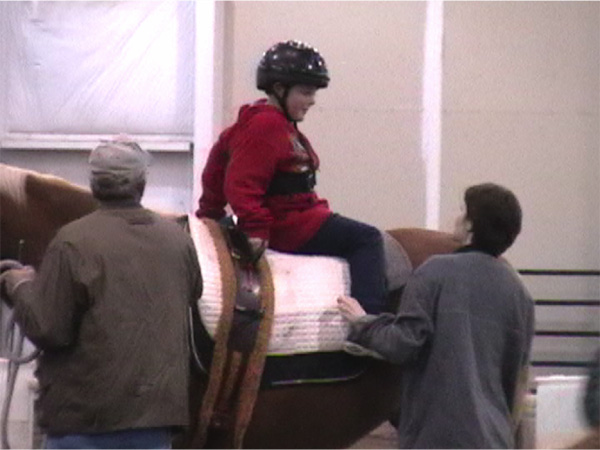Horses and Humans Research Foundation
Learn about Horses and Humans Research Foundation, an organization working to support, promote and fund scientific research that explores the potential benefits of equine-assisted activities and therapies and to educate the public on research findings–– helping equine-assisted activities to become more accessible to those in need.
by Jocelyn Pierce
Equine assisted activities and therapy have shown to be effective in treating individuals with a wide range of disabilities and individual needs. For those involved in therapeutic riding programs, the progress individuals make is unmistakable to both participants and onlookers.
HHRF has published successful studies in so many different areas of equine assisted therapy including cerebral palsy, autism, children with abuse/neglect, and veterans’ studies.
Equine Assisted Activities and Therapy
Over the last 25 years, the equestrian community, along with therapists and doctors, has been documenting the impact of equine assisted activities and therapy. However, much of the information about how horses can help humans was anecdotal, and not based in proven scientific methods.
Molly Sweeney, a longtime proponent of equine assisted activities, realized there was a need for an organization to focus solely on producing research about equine therapy. In 2002, Sweeney, along with others, laid the groundwork for Horses and Humans Research Foundation (HHRF).
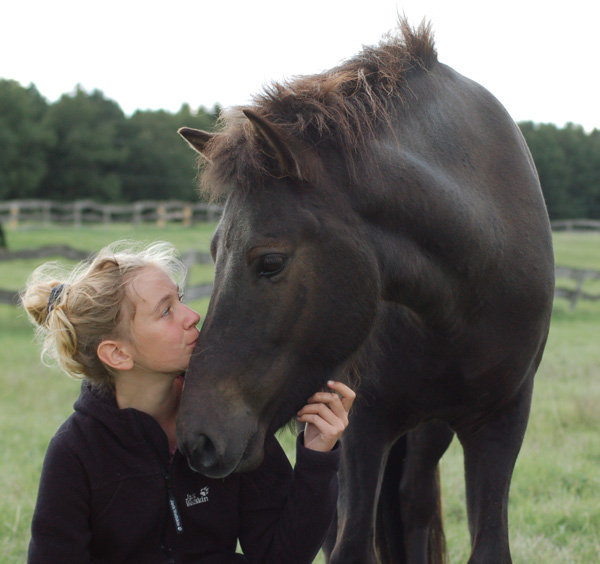
Even though many involved with therapeutic riding see firsthand the benefits of equine therapy, insurance companies won’t reimburse patients until there is enough scientific evidence to prove the lasting benefits.
HHRF supports, promotes, and funds scientific research in order to support the claim of the benefit of equine assisted activities and therapy. Without research in the field of equine assisted therapy, donors, foundations, and insurance companies are less likely to support and contribute to this alternative form of therapy. Studies will also help influence the curriculums of therapeutic riding programs, ensuring participants receive the maximum benefit. As the public is educated on findings, programs may in turn gain increasing support and become more accessible to all.
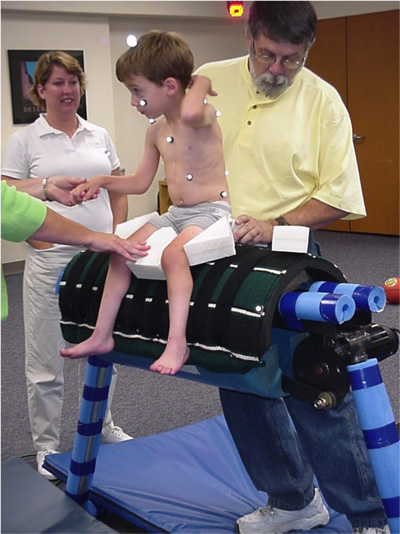
HHRF has funded research that studies motion analysis for cerebral palsy. The movement of the machine tracks motion, measuring the stability on the machine before and equine assisted therapy.
Executive Director of HHRF, KC Henry, has worked in equine-assisted activities programs for over thirty years. Henry believes research will also affect the public’s appreciation of the horse. At a time when there are so many unwanted or neglected horses, open spaces for horses is becoming encroached upon, and much of the general public sees horseback riding as a rich man’s sport, people can begin to see how horses can help humans through HHRF’s research studies.
“Horses can change motivation and improve our communication, health, and leadership skills,” says Henry, “this will change our society’s perception of horses.”
Military Veterans and Post Traumatic Stress Disorder
Post Traumatic Stress Disorder, or PTSD, affects about 7.7 million American adults in a year. Equine assisted activities and therapy have shown to be effective in treating PTSD, including PTSD in military veterans. Currently, therapeutic riding centers across the United States are working with veterans affected by physical and mental disabilities.
HHRF has a new research partnership with the Caisson Platoon Equine Assisted Program, which recognizes the need for research to prove effectiveness of equine assisted therapy for veterans of war with PTSD and Traumatic Brain Injuries (TBI).
Because horses are reactive animals, they require calm signals, helping participants to recognize emotion regulation and self-control by getting immediate feedback from their equine partners. Therapeutic riding also helps with physical strength and balance, making equine therapy a well rounded and effective rehabilitation practice for veterans with PTSD and TBI.
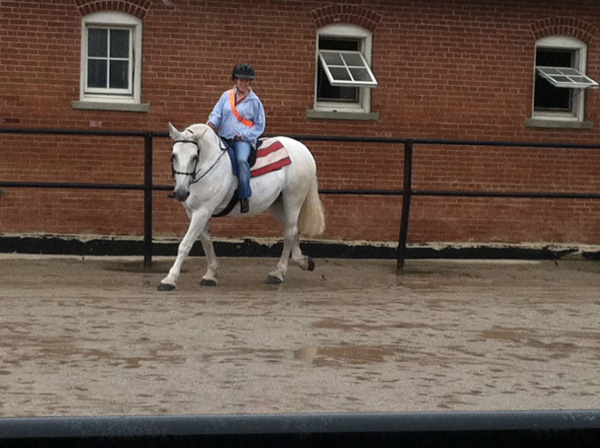
Horses and Humans has a new partnership with the Caisson Platoon to benefit military veterans with PTSD and TBI.
HHFR expects this partnership with the Caisson Platoon Equine Assisted Program to help develop evidence based equine assisted activities and therapy practices for PTSD and TBI rehabilitation, influence industries such as health insurance companies to provide financial support to cover this rehabilitation services, and increase involvement and support for equine assisted activities as a viable mode of PTSD and TBI rehabilitation.
How HHRF Selects Research Institutions
HHFR has a stringent selection process for research grants. HHRF has an open call for proposals, but selecting a research institution to perform studies is a rigorous process; they look for the best studies, and the ones that will achieve the most valid results.
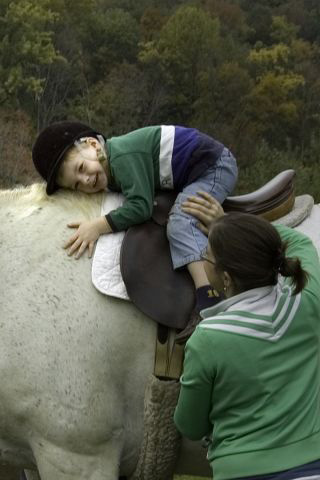
Studies will help influence curriculums of therapeutic riding programs, ensuring participants will receive the maximum benefit.
All applicants must go through a competitive review process by HHRF staff, HHRF Board of Directors, and a professional Scientific Review Committee, a panel of highly credentialed scientists meant to evaluate the scientific rigorousness of potential studies. They examine how well developed the research project is and take into account the research design and scientific significance, choosing only the most promising studies.
Results of the research studies are given to professionals in the equine assisted activities field, medical professionals, stakeholders and supporters. Research is published in peer reviewed medical journals. To date, HHRF has published on the influence of equine assisted therapy on cerebral palsy, autism, children with abuse/neglect, and veterans’ studies.
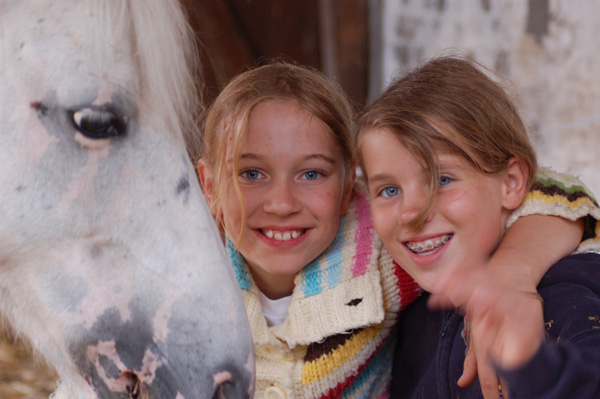
HHRF has a Scientific Review Committee, a panel of highly credentialed scientists that examine how well developed research project proposals are and take into account their scientific significance.
While the benefits of equine assisted activities and therapy are obvious to those involved with therapeutic riding, more awareness is needed so the general public may understand its importance. The end goal of these efforts is that those who would benefit from equine assisted activities and therapy would have increased access to programs and financial support so they would be able to participate. This awareness will be generated by publishing research findings that HHRF supports, and HHRF can not support studies without donations.
“Funding is not coming in quickly enough,” says Henry, “there are so many different areas to research.”
Learn more about the Horses and Humans Research Foundation and how you can get involved and donate.
About the Author: Jocelyn Pierce is an avid equestrian and lover of travel and photography. Her passion for adventure has led her on numerous excursions throughout North America and Europe. When she’s not riding and competing her homebred mare, she enjoys hiking, camping, and snapping photographs.
